The future of developer adoption: Six trends shaping 2026 from Jono Bacon

Insights from Jono Bacon’s session at HANDS-ON by Instruqt
At HANDS-ON by Instruqt, we brought together leaders redefining how developers learn, adopt, and champion technology. Following Arun Gupta’s call for empathy-driven developer relations, Jono Bacon, community strategist, author, and founder & CEO of Stateshift, looked ahead to what’s next.
In his session, “Six trends shaping developer adoption in 2026,” Bacon shared how AI, community evolution, and developer experience will transform the way teams engage and grow their developer ecosystems.
1. Goodbye forums, hello frictionless support
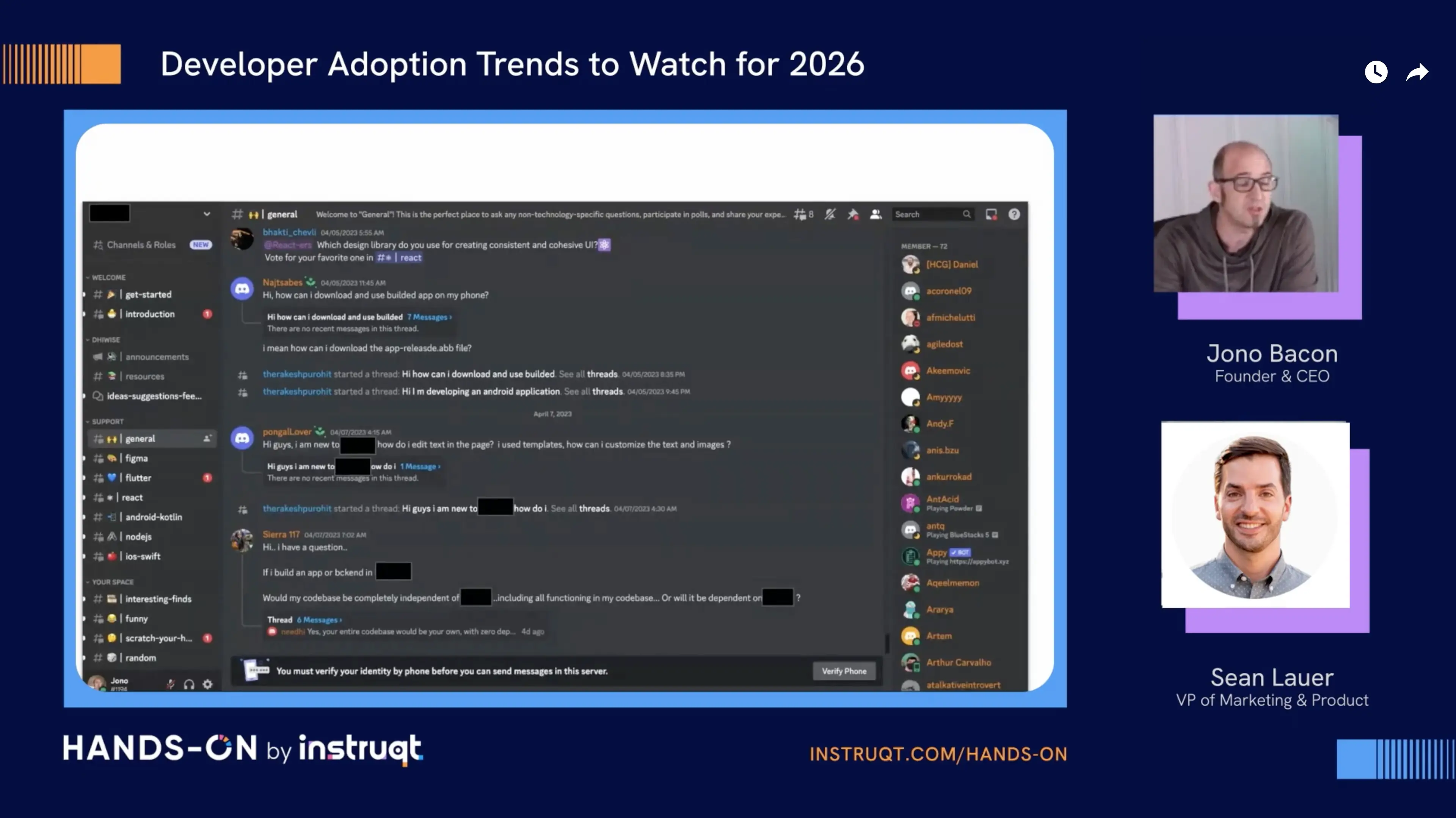
Jono began with a bold prediction: traditional community forums are fading fast.
In the past, forums powered developer engagement. But with tools like ChatGPT, Claude, and AI-assisted documentation, developers now expect instant, contextual answers. Instead of transactional Q&A threads, Bacon believes forums will evolve into spaces for shared learning, storytelling, and best practices, making communities more human, not less.
“Developers don’t wake up wanting to answer questions on the internet,” Bacon joked. “They want to solve problems, and AI will help them do it faster.”
2. From Google to ChatGPT: The rise of LLM discoverability
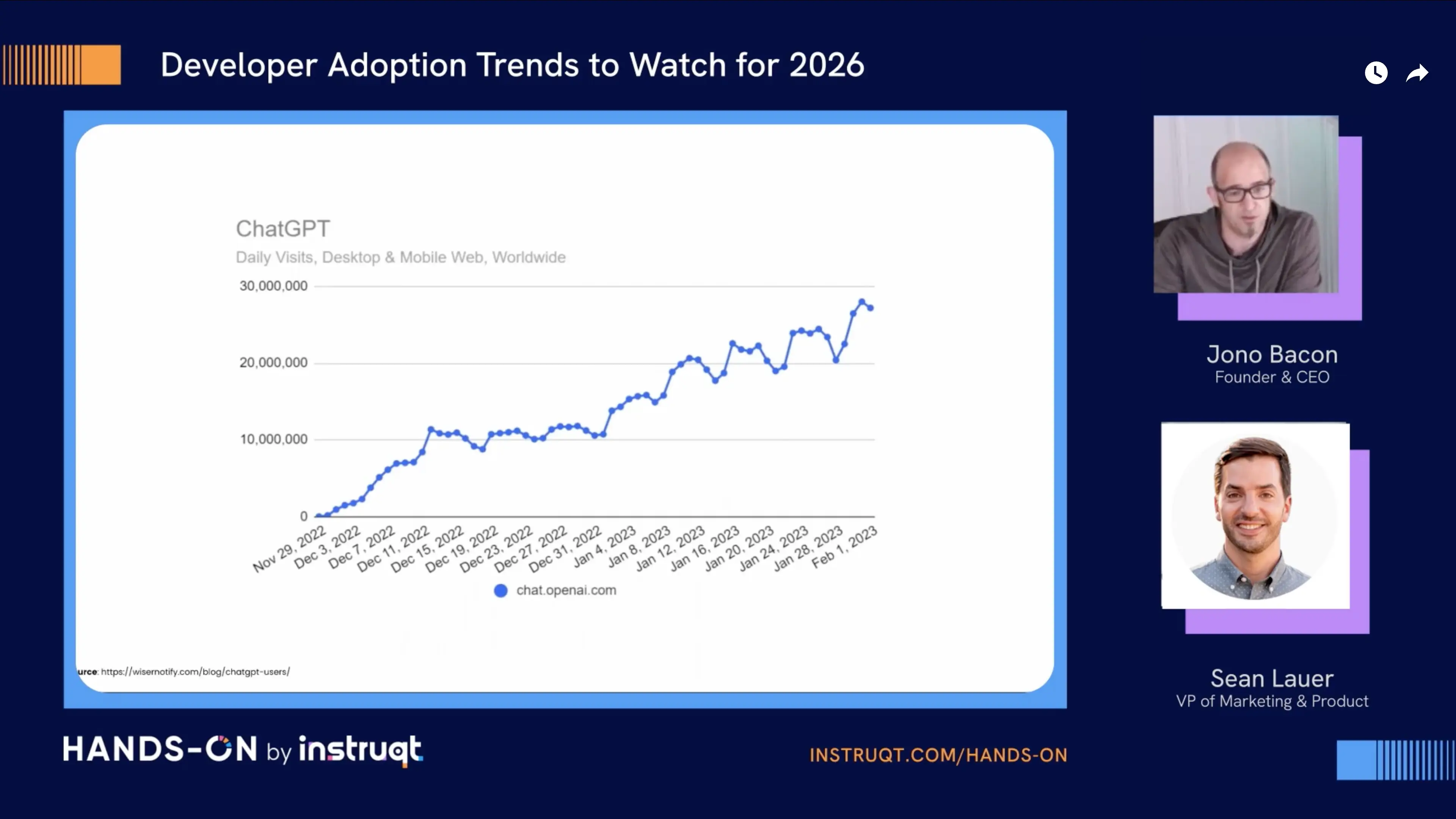
Developers no longer start their journey in search engines; they start in chatbots. Bacon emphasized that developer marketing teams must now think beyond SEO and focus on LLM visibility.
“People won’t just visit your blog. They’ll ask ChatGPT, and your brand needs to show up in that answer.”
He shared how Stateshift uses tools like Peec and Otterly to track brand mentions in LLMs. The lesson: every blog, track, and doc you create must be structured so it’s learnable by AI models. This new discipline, Generative Engine Optimization (GEO), is becoming key to developer adoption in 2026.
3. Belief as a competitive moat
The next shift, Bacon said, is emotional: belief will become a brand’s true differentiator.
He compared developer-favorite brands: GitHub, Stripe, Ubuntu, and explained why they inspire deep connection. Each built a belief system: a creation story, a shared creed, insider language (“pull requests,” “social coding”), and clear non-believers to define what they stand against.
“In a noisy market, belief cuts through. Developers join movements, not marketing campaigns.”
For companies building developer communities, the takeaway is clear: developer relations (DevRel) must go beyond advocacy; it must create belonging.
4. Time-to-value in 10 minutes
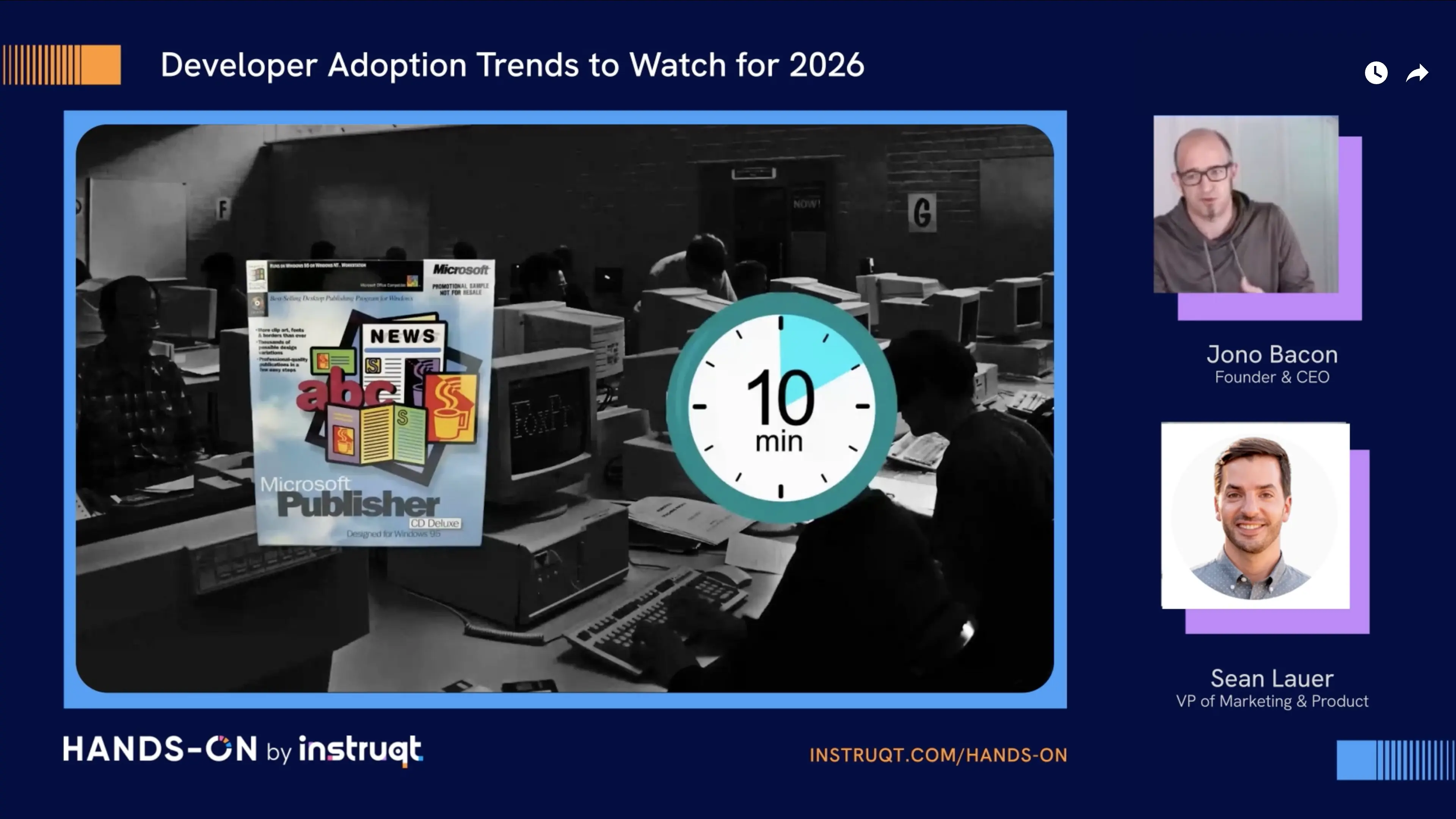
Echoing Arun Gupta’s message of empathy and speed, Jono highlighted time-to-value (TTV) as the most critical metric for developer experience (DevEx).
He shared Microsoft’s early software philosophy: “When you open the box, you should do something useful in 10 minutes.”
Bacon showed how optimizing onboarding—streamlining sign-up flows, improving quick start guides, and showcasing demos in under a minute—dramatically boosts conversion. Companies like Zep, after implementing these tactics, saw user activation rates climb from 30% to 70%.
“Five or ten minutes; it doesn’t matter. What matters is value fast. That’s what builds adoption.”
5. AI-powered onboarding replaces static docs
Bacon predicted that static documentation will soon give way to AI-driven, personalized onboarding.
He demonstrated how loading a product’s documentation and user data into an LLM can guide each developer based on their context and goals. His quick prototype for the Cloud Native Computing Foundation (CNCF) showed how AI can instantly recommend the right membership benefits, proving how this model can work for any developer tool.
“Imagine if every developer could talk to your product like a mentor,” Bacon said. “That’s where onboarding is heading.”
6. The DevRel evolution: From vanity metrics to value
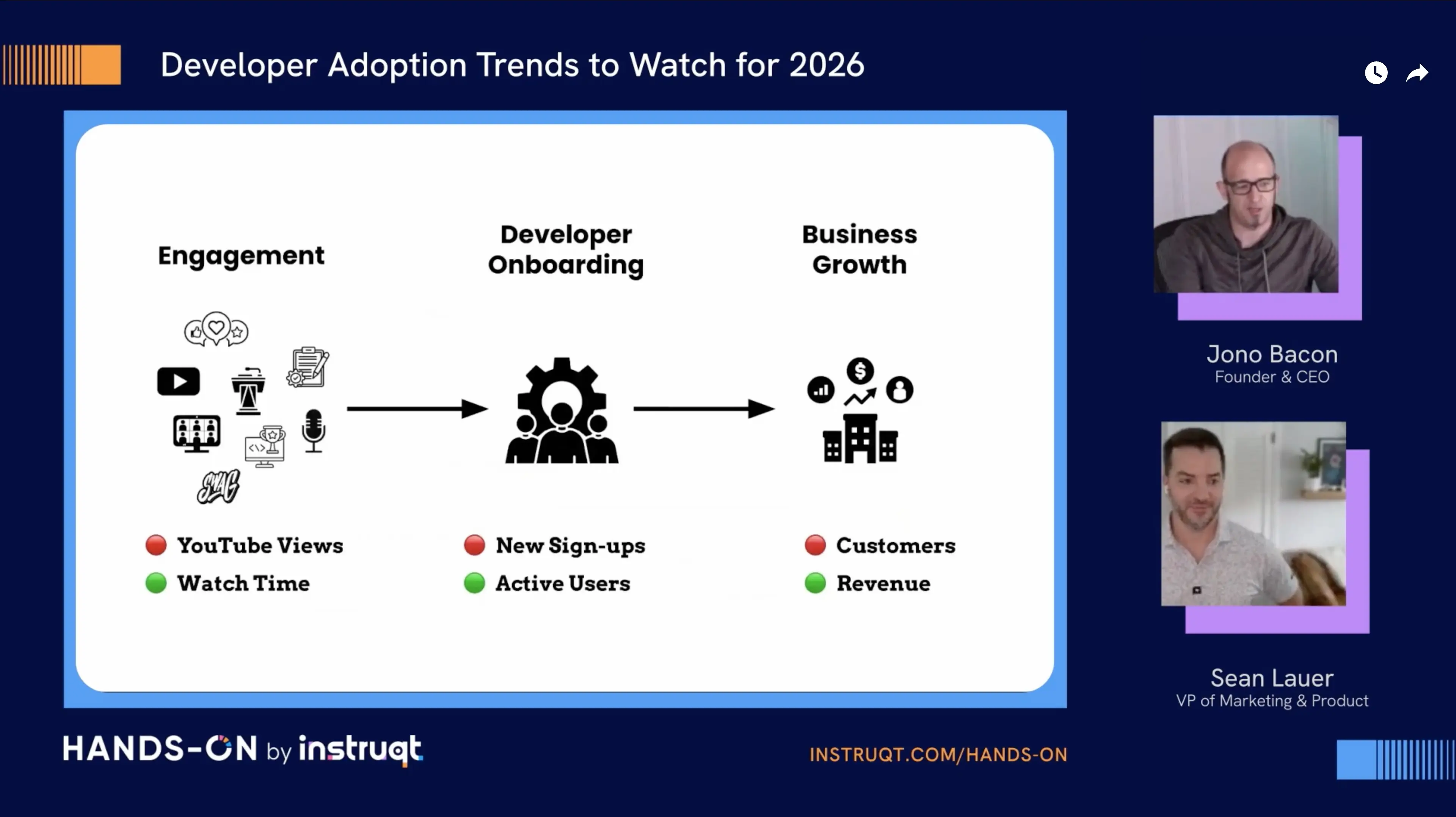
The final prediction hit close to home for developer relations leaders. Bacon warned that DevRel success must evolve beyond vanity metrics—like conference talks or blog views—toward measurable business outcomes.
“It’s not about how many talks you give or how many followers you have. It’s about how your work impacts revenue, retention, and activation.”
He outlined a new DevRel framework focused on three layers of alignment:
- Business growth → revenue and customer expansion
- Developer onboarding → activation and product adoption
- Engagement → meaningful interaction, not empty impressions
When DevRel sits between marketing, sales, and product, it becomes the glue of the developer adoption flywheel.
How Instruqt enables developer adoption
At Instruqt, we believe the future Jono described is already here—and it’s powered by experience. Our hands-on virtual labs and browser-based sandboxes give developers a faster path to value through real-world, interactive learning.
With Instruqt, you can:
- Deliver AI-ready, frictionless onboarding experiences
- Run scalable hands-on workshops and technical enablement programs
Measure engagement, adoption, and time to value (TTV)
Build deeper developer belief through learning by doing
Instruqt helps you future-proof your developer experience strategy, transforming empathy, engagement, and education into growth.
Stay in touch
Stay connected with Instruqt and our community of developer educators, advocates, and technical sellers shaping the future of adoption.
👉 Follow Instruqt on LinkedIn for insights, events, and expert perspectives.





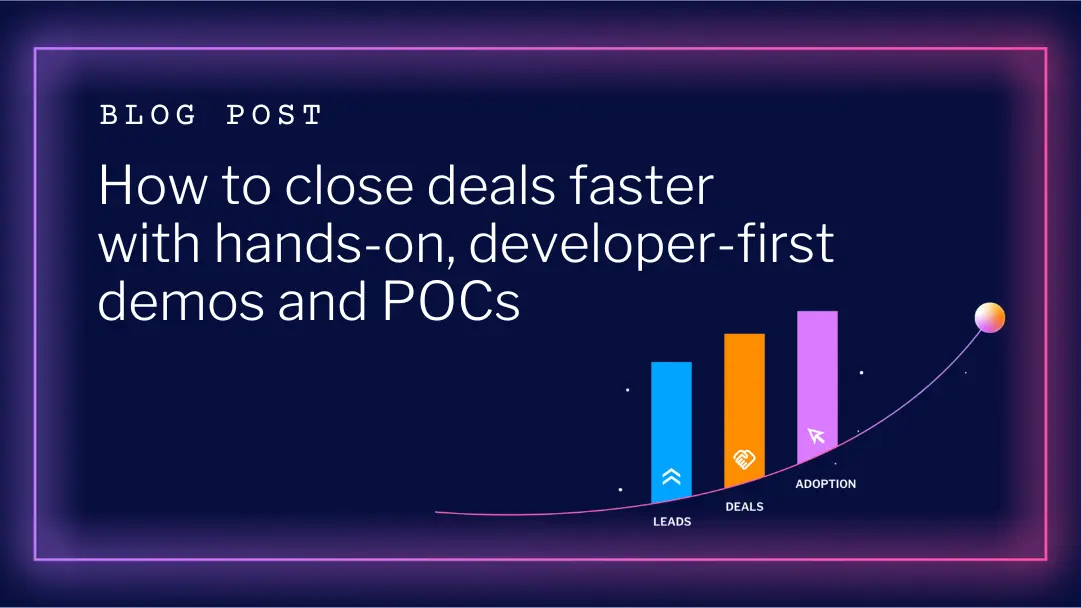
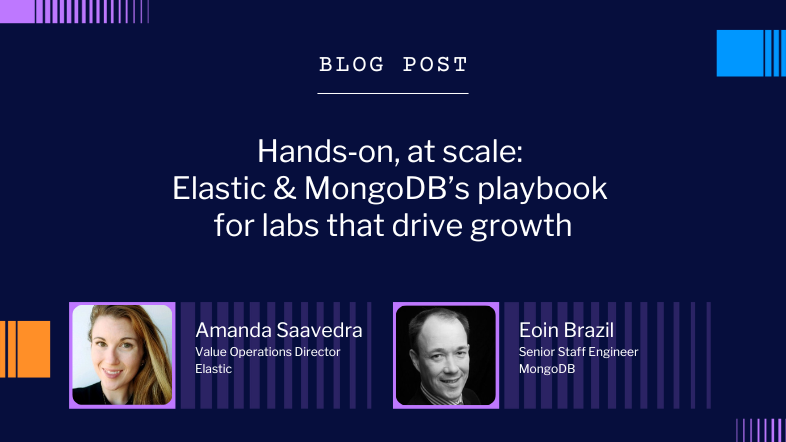
.webp)

